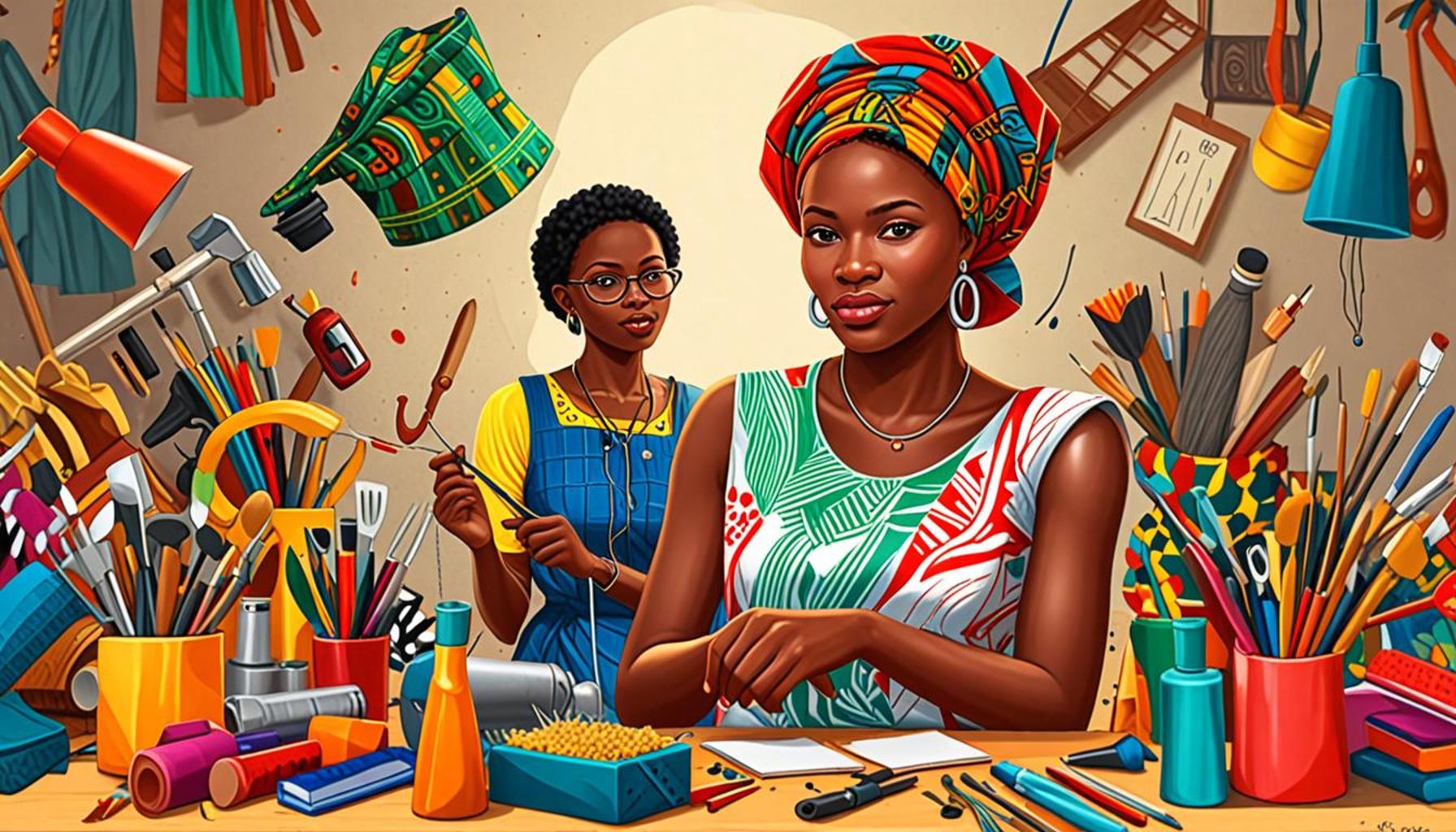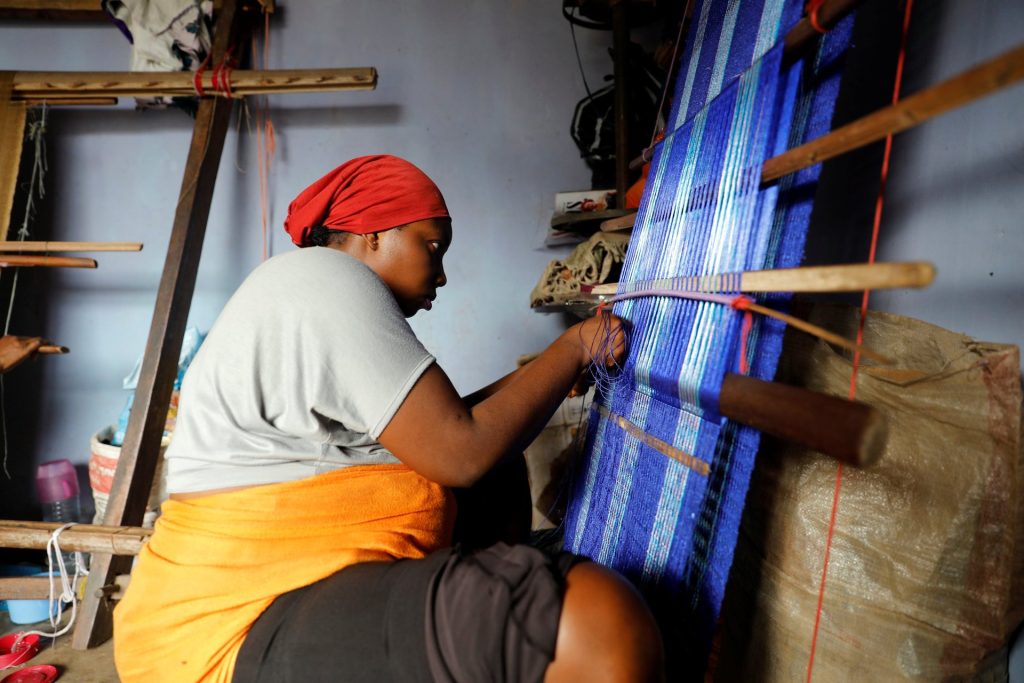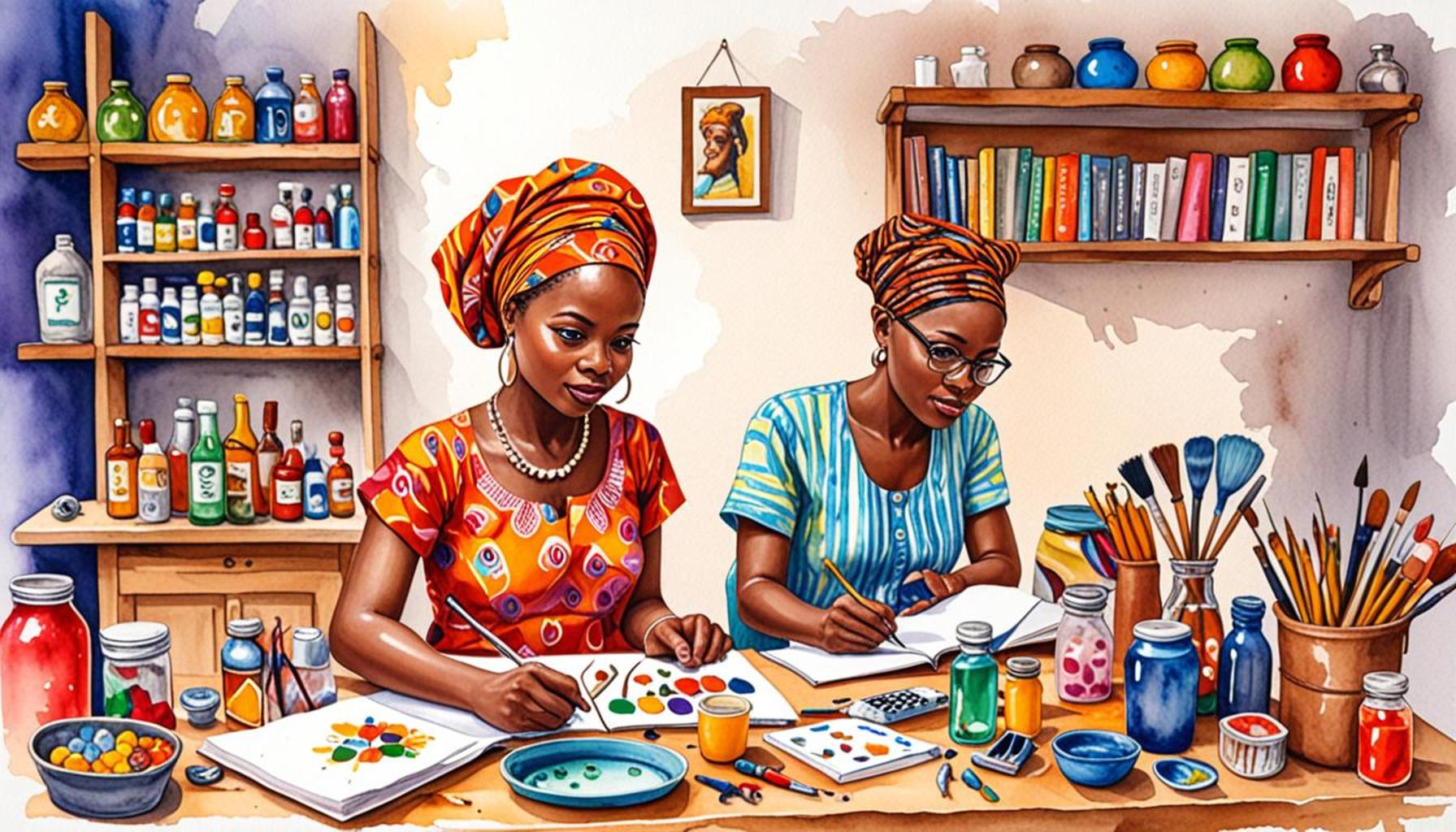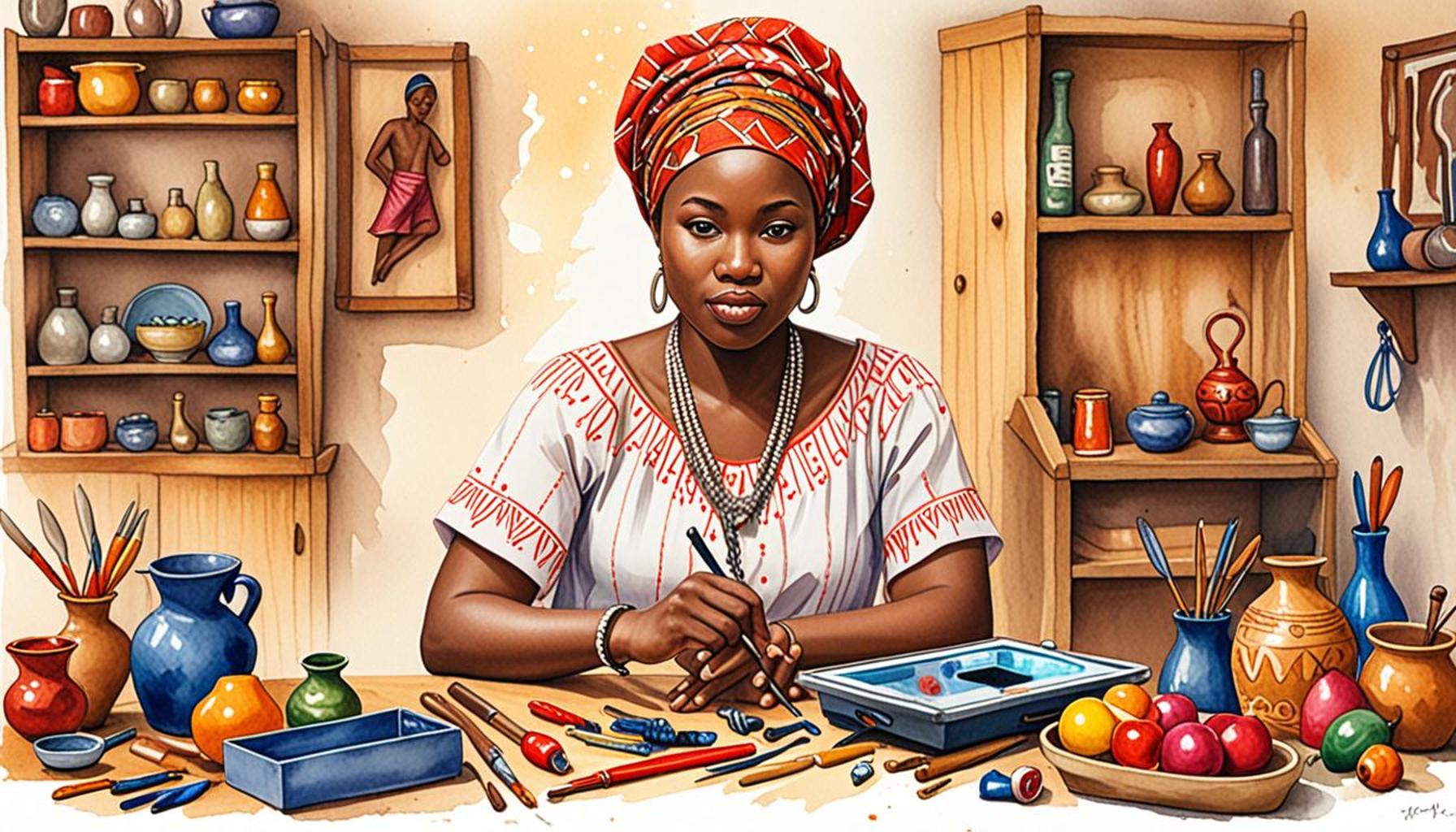The Revolution of Sustainable Craftsmanship: Innovations in Materials and Techniques in Nigeria

The Transformation of Craftsmanship in Nigeria
Nigeria is standing at the precipice of a transformative era in craftsmanship that is marked by a profound shift towards sustainability and innovation. This evolution is not merely a trend; rather, it represents a comprehensive change in how artisans approach their craft. With an increasing emphasis on environmentally friendly materials and cutting-edge techniques, traditional practices are being redefined, breathing new life into the cultural fabric of the nation.
Local Materials: A Sustainable Approach
A significant aspect of this movement is the growing use of local materials. Artisans across Nigeria are tapping into indigenous resources such as recycled plastics, which are creatively repurposed into stunning art pieces and functional items. For instance, in places like Lagos, artisans have started turning discarded plastic bottles into decorative baskets and bags that are not only visually appealing but also environmentally conscious.
Similarly, the utilization of sustainable wood harvested from responsibly managed forests is gaining popularity. Craftspeople are sourcing timber in ways that minimize environmental impact, creating furniture and home decor that showcase intricate designs while promoting forest conservation. Organic fabrics, such as those made from natural dyes and locally grown cotton, are also increasingly favored, reflecting a commitment to eco-friendly practices.
Embracing Technological Advancements
In addition to local materials, the integration of technological advancements is further revolutionizing the craftsmanship landscape in Nigeria. Techniques such as 3D printing and digital design tools enable artisans to create complex patterns and shapes that were previously unattainable with traditional methods. This not only enhances creativity but also streamlines production processes, allowing for greater efficiency and innovation.
For example, young designers are using software to craft designs that can be printed into intricate jewelry and homeware, merging modern aesthetics with cultural symbolism. This fusion is vital in attracting a younger demographic who are inclined towards unique, locally made products that tell a story.

Community Engagement and Collaboration
The revitalization of craftsmanship is further strengthened by community engagement. Many artisans are coming together to form cooperatives that foster collaboration on sustainability-focused projects. These initiatives not only empower artisans but also ensure that sustainability becomes a collective effort.
One noteworthy project is the “Artisans Against Plastic” initiative, where local craftspeople collaborate to create art installations made from reclaimed materials, raising awareness about plastic pollution in their communities. Through workshops and shared resources, artisans are not only preserving their crafts; they are also building a sustainable future for their communities.
Supporting Local Economies and Cultural Heritage
This shift towards sustainable craftsmanship is more than an environmental imperative; it is fundamentally tied to supporting the local economy. As artisans adapt to contemporary market demands while honoring their cultural heritage, they help preserve traditional skills that might otherwise fade away. They embrace an entrepreneurial spirit, recognizing that their unique products can compete in the global marketplace, merging cultural identity with modern trends.
As we delve deeper into this vibrant movement, we uncover the captivating stories of artisans who are not only meeting the demands of market trends but are also charting a new course for the future of art and design in Nigeria. Their innovative techniques and choice of materials serve as a testament to the resilience and creativity of the Nigerian spirit, promising a bright future for sustainable craftsmanship.
SEE ALSO: Click here to read another article
A New Era of Materials and Techniques
As Nigerian artisans embark on this revolution of sustainable craftsmanship, the innovative use of materials and techniques is at the forefront of their endeavors. This shift emphasizes the importance of environmental consciousness while simultaneously promoting cultural heritage. The artisans are weaving sustainability into their work, making it a cornerstone of their practices.
Exploring Indigenous Resources
The embrace of indigenous resources is a hallmark of this new sustainable craftsmanship. Artisans are increasingly leveraging locally sourced materials, which not only reduces the carbon footprint associated with importing goods but also highlights Nigeria’s rich natural resources. For example, adire, a traditional dyeing technique practiced by the Yoruba people, is being revived with organic dyes made from natural plants. This method not only respects cultural traditions but also offers an eco-friendly alternative that resonates with consumers seeking sustainable products.
The use of recycled materials is another notable trend. Artisans in cities like Benin are creating exquisite beadwork using discarded glass and other remnants, transforming waste into breathtaking jewelry and fashion items. This creative recycling not only elevates the status of trash but also illustrates the potential for sustainable income generation through art.
Innovating Traditional Techniques
Alongside traditional resource use, artisans are also innovating techniques to enhance efficiency and expressiveness. The integration of technology, such as laser cutting and digital embroidery, allows artisans to produce intricate designs that blend modern aesthetics with cultural motifs. This fusion caters to the tastes of a diverse audience, effectively attracting both local and international markets.
Additionally, the rise of local workshops focused on skill-sharing has empowered artisans to explore new techniques and share best practices. Some notable initiatives include:
- Sewing cooperatives that teach sustainable fashion production.
- Beading workshops that emphasize the importance of local materials.
- Woodworking classes that use responsibly sourced timber.
These collaborative frameworks not only enhance skill sets but also foster a sense of community among artisans, contributing to the overall growth of sustainable craftsmanship in Nigeria.
Creating a Resilient Future
The transformation of materials and techniques in Nigerian craftsmanship is not just a fleeting trend; it represents a significant transition toward building a more resilient economic future. Artisans are stepping into entrepreneurship roles that amplify their cultural narratives while catering to the global demand for sustainable products. They are beginning to recognize the profound impact their choices can have on the environment, their communities, and themselves.
This regenerative approach is breathing new life into traditional crafts, allowing artisans to thrive in an era where sustainability is becoming a pivotal aspect of consumer choices. As we continue to explore this movement, we unveil the myriad stories of resilience, creativity, and innovation that showcase how Nigeria’s artisans are shaping the future of sustainable craftsmanship.
The Revolution of Sustainable Craftsmanship: Innovations in Materials and Techniques in Nigeria
Nigeria is experiencing a transformative wave in sustainable craftsmanship, spurred by a fusion of traditional techniques and contemporary innovations. Artisans across the country are embracing eco-friendly materials, leading to a profound shift in how crafts are produced, marketed, and consumed. With increasing awareness around environmental conservation, this movement not only supports local economies but also boosts cultural heritage through traditional craftsmanship.
One significant aspect of this revolution is the utilization of locally sourced materials. By prioritizing indigenous resources, artisans minimize environmental impact while ensuring the preservation of local biodiversity. This practice has led to the use of natural dyes derived from plants and minerals, promoting a healthier ecosystem. Moreover, the integration of upcycled materials into crafts has gained traction. Instead of relying on mass-produced items, creators are ingeniously transforming waste into valuable pieces of art, thus reducing landfill contributions.
Furthermore, innovative techniques such as 3D printing and digital fabrication are being employed alongside age-old methods. These technologies facilitate precision and creativity that resonate with the values of modern consumers, blending sustainability with aesthetics. Designers are not only creating visually captivating pieces but also functional items that meet the demands of today’s environmentally conscious buyers.
This synergy between tradition and innovation is vital in crafting a sustainable future for Nigeria’s artisans. As they harness the power of technology while respecting their heritage, they pave the way for a new market that champions ecological integrity. Sustainable craftsmanship in Nigeria is a testament to how innovation can emerge from a deep-rooted respect for culture and nature, offering a path for others to follow.
| Advantage | Description |
|---|---|
| Cultural Preservation | Revival of traditional craftsmanship techniques promotes local heritage. |
| Eco-Friendly Materials | Use of sustainable resources reduces environmental impact. |
This captivating blend of culture and sustainability not only enhances the artisans’ livelihoods but also resonates with consumers seeking ethically-made products. This holistic approach ultimately contributes to a more sustainable and resilient economy, showcasing Nigeria’s dedication to environmental responsibility through innovation in craftsmanship. As these initiatives progress, they present an exciting opportunity for global exposure to Nigeria’s rich artisanal culture.
LEARN MORE: This related article may interest you
Revitalizing Local Economies through Sustainable Craftsmanship
The revolution of sustainable craftsmanship in Nigeria is not only about innovative materials and techniques; it also serves as a catalyst for revitalizing local economies. As artisans embrace sustainable practices, they are rejuvenating their communities and creating economic opportunities that align with global trends in eco-conscious product demand.
Boosting Local Industry
One of the most significant impacts of this sustainable movement is the boost in local industries. For instance, the rise of natural dye production has led to a renewed interest in textiles, creating demand for local cotton farmers. This symbiotic relationship supports farmers while providing artisans with a steady supply of high-quality, sustainably sourced materials. The GMO-free Nigerian cotton is particularly prized as artisans prioritize organic materials that align with their eco-friendly principles.
Moreover, the popularity of eco-fashion is encouraging Nigerian artisans to build brands that incorporate sustainable practices. A notable example can be seen in several designers who have turned to sustainable tailoring methods, employing tailors and seamstresses from local communities, thereby increasing job opportunities. With the burgeoning local and international markets interested in ethically produced garments, artisans can expand their reach and influence.
Community Engagement and Education
A vital aspect of this revolution is the emphasis on community engagement and education. Craftsmanship workshops designed to teach sustainable practices have sprung up across Nigeria, equipping the younger generation with crucial skills while instilling an appreciation for their cultural heritage. Programs, such as those offered by the African Textile Heritage Project, focus on mentorship, helping young artisans learn traditional techniques with a modern twist. This redevelopment of skills not only reinforces local craftsmanship but fosters innovation by incorporating contemporary styles.
- Educational partnerships with local universities that integrate sustainable craftsmanship into their curricula.
- Community fairs that celebrate sustainable products and allow artisans to showcase their work while educating the public.
- Mentorship initiatives pairing experienced artisans with novices to promote hands-on learning.
Impact on Urban and Rural Development
The sustainable craftsmanship movement is uniquely adaptable—benefiting both urban and rural areas alike. In metropolitan hubs like Lagos, craft markets are bustling with creativity, serving as platforms for artisans to display their art and connect with consumers directly. In contrast, rural artisans are integrating traditional skills with innovative approaches to generate income through local tourism and online sales platforms.
For example, towns known for their pottery, such as Makurdi, are seeing an increase in tourism as visitors seek out authentic handcrafted goods. Here, artisans combine modern designs with traditional methods, attracting both tourists and ecologically conscious buyers operating in line with the sustainable ethos. Similarly, social enterprises are emerging, which help promote these artisans while providing a share of profits back to the community for infrastructure and education.
Overall, the revolution of sustainable craftsmanship in Nigeria is weaving a rich tapestry of socioeconomic growth, environmental awareness, and cultural preservation. By exploring innovative materials and techniques while fostering community collaboration, artisans are positioning themselves at the forefront of a movement that not only supports local economies but also protects the rich cultural heritage of Nigeria. As this narrative unfolds, the implications for future generations of artisans remain hopeful and inspiring.
CHECK OUT: Click here to explore more
Conclusion: Embracing a Sustainable Future
The revolution of sustainable craftsmanship in Nigeria stands as a pivotal movement, intertwining tradition with modernity through innovative materials and techniques. As artisans increasingly prioritize sustainability, they not only elevate their crafts but also create an economic ripple effect that transforms communities. The interdependence of local farmers, artisans, and the broader economy illustrates the power of this movement; the demand for eco-friendly products stimulates local agricultural practices and fosters job creation, thus laying the groundwork for a more resilient economy.
Education and community engagement play crucial roles in this revolution, with workshops and mentorship programs ensuring that traditional skills are preserved while adapting to new sustainable paradigms. The active involvement of youth in these initiatives signifies hope for a future where Nigerian craftsmanship is not only recognized but celebrated on global platforms. Craft markets in urban centers and local tourism in rural areas showcase the rich tapestry of Nigerian art, attracting both local and international interest in artisanal goods.
As we reflect on the impact of this movement, it becomes clear that the challenges of environmental change can be met with innovative solutions rooted in cultural heritage. The path forward lies in the hands of artisans, educated consumers, and supportive communities, all committed to a sustainable future. Together, they are not only preserving Nigeria’s rich craft traditions but also paving the way for a new era of sustainable craftsmanship that resonates worldwide. This revolution is not merely a trend; it is a profound shift towards a more responsible and culturally rich economic landscape.


